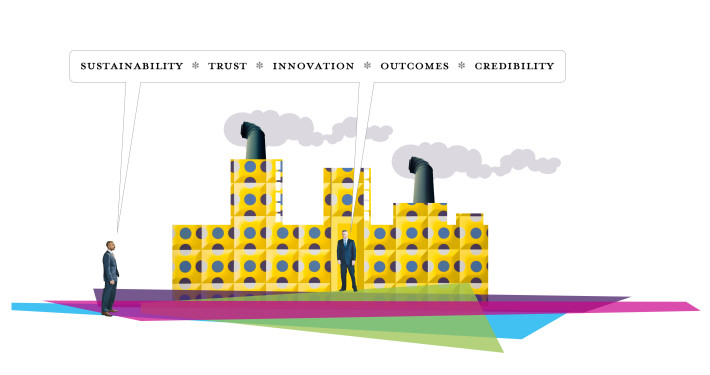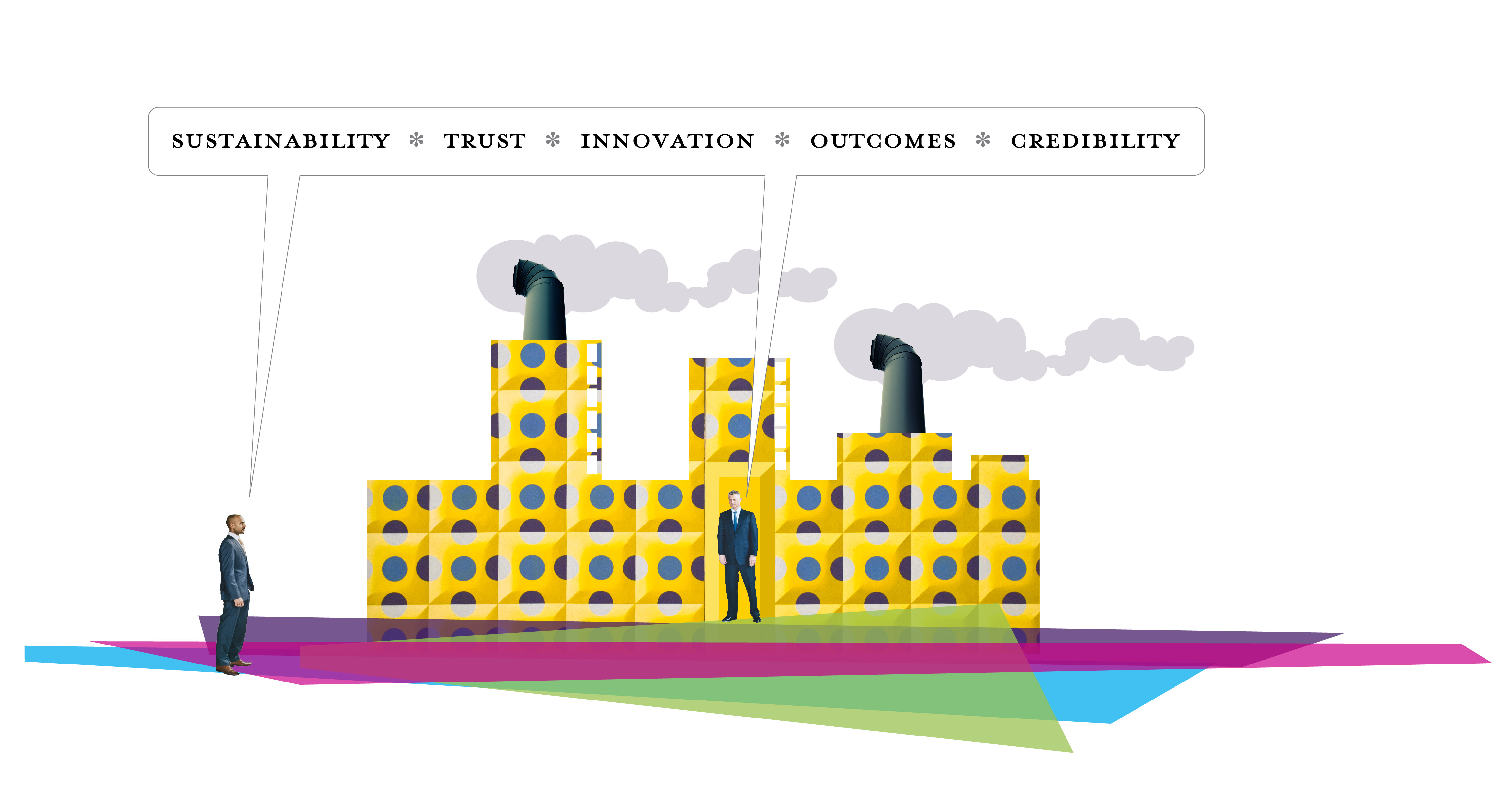Internal versus external consultants: Single team, common cause

When should you seek outside help and when should you do it yourself? This was a topic of a debate I attended recently titled Inside or Outside: Debating the value that external and internal consultants bring to their clients. The format was a bit tongue in cheek as each side relied on typecasts to critique the other. I felt myself at times defensive of my own external camp while wondering whether simply asking the question may prevent us from arriving at an appropriate response.
External consultants face some pretty bad stereotypes, and support for their position can be tenuous at best. They are referred to as masters of illusion and a swindle and articles abound on why people are sick and tired of consultants, why they hate consultants and the general critique of management fads.
And yet the media presentation of what is referred to as the House of Lies is shown to be not entirely accurate. As much as there is criticism, there is also much written about how to bring innovation to professional services and research into the appropriate structure for a client-consultant relationship. Discussions about when and how to bring in in outside help are pervasive across industries and disciplines, including clinical services, information technology, and recruiting.
Four common themes for a healthy relationship
Common themes emerged through the evening as the three internal consultants squared off against the three external consultants. The themes are consistent with what I have experienced in my career as both provider and recipient of consulting services.
Credibility: The message over the messenger
Clients often share with me that a primary value they get from an external perspective is the perceived credibility awarded to the consultant by those in the organisation. The credibility of external consultants is often inferred, whereas internal opinion can be limited by their title or lack thereof. One of the external debaters even went so far as to reference scripture about the lack of respect for a prophet in his own land.
Awarding credibility that is not earned can be just as damaging as not awarding credibility when it is due. This can hinder the decision-making process and inhibit critical thinking by creating bias for or against what is being said based on the person delivering the message rather than the relevance and value of the content. Both internal and external agents should be awarded credibility based on what is being said as much as who is saying it.
Trust: Alignment of objectives
Trust is a challenge in most commercial arrangements due to perceived competing motivations. External agents are often measured by their capacity to increase revenue for their own position, whereas internal employees are often trying to improve profit through cost reductions or revenue opportunities and keep their job or advance their career. This conflict was expressed through the evening with reference to external consultants “sucking the client dry”.
Trust is eroded when these agendas are perceived to bias behavior at the expense of the other party or the agreed outcomes. Contracts are put in place to mitigate this effect. When trust is eroded, relationships can be reduced to holding the other party accountable through contract clauses and litigation around the letter of the law. Internal staff then keep external agents at arms length, treated as commodities with statements like “we buy you, and we sell you”.
The ideal situation is one where agendas are openly declared and where communication is transparent and frequent. Performance metrics between internal and external agents are declared and aligned with each other and the outcomes of the project at hand.
Sustainability: Leveraging the right people for the right purpose at the right time
The argument for sustainability states that internal agents have more of an interest in the ongoing survivability of the organisation. If everything goes horribly wrong, the external consultant can move onto a new client whereas the internal staff need to live with the outcomes. Repeated failure across multiple clients by the external consultant is addressed in time by the invisible hand of the market, but this is little solace to one of the organisations experiencing a failed intervention.
The other factor related to sustainability is the ongoing reliance of the organisation on the external consultants services. External consultants are typically brought in for low-frequency specialist services and for change processes. If the specialist services become constant or the change initiative turns into something that is ongoing and operational, it is often more cost effective to bring those skills internal. This transition needs to be an open and up-front conversation to the engagement process.
One of the external consultants at my table commented how her position as an organisational psychologist empowered the client to realise the value of the skills to where they hired their own full time psychologist. In my role as leader in a digital studio, I found it rewarding to see a client build their internal team of IT professionals to support and advance systems our team built. Sustainable returns come from knowing when to make the transition from external to internal and being open with each party on when and if this should occur.
Innovation: Tap into each other’s knowledge
An argument raised for utilizing external consultants is that of bringing innovation to the client. External consultants often have the benefit of engaging with a diverse range of clients, whereas employees of an organisation can be limited by the boundaries of their training budget or industry segment.
I believe this aspect of innovation needs to be explicitly built into the relationship. Establish sessions where the external consultant can present on technologies, models and case studies that may be of benefit to the organisation. Those in the organisation do not know what they do not know, while the external consultant can be guessing as to what may have value to the organisation. This need for understanding the internal organisation was reiterated by both sides through the evening.
As an external consultant, I refer to this as laying a minefield of ideas in the hopes that the client stumbles upon something that may have value. To increase the likelihood of connection, create a space where each party can access what the other knows, be open about what they do not know, and watch the sparks fly at the intersection point.
Single team working together for a common cause
In our round table discussions after the debate, I questioned whether the underlying premise of the debate might be flawed. Like my thoughts on the product versus service debate, I feel the conversation is healthy but needs to quickly move beyond stereotypes into a place of adding measurable value.
The value of the debate is to bring themes such as those above into our conversation to challenge our stereotypes of others. It can also help guide our own behaviour to avoid becoming stereotypes ourselves.
My position through my consulting career is one of “a single team working together for a common goal; the goal of the client’s success through the sustainability of the supplier”.
Do not mistake this for unrealistic naivete. I am a strong proponent of the accountability that comes from well-defined supply chain structures. Accountability structures are put in place to the extent necessary to mitigate the human condition of self-interest and ensure appropriate levels of experience and outcomes.
As two organisations, we are after the same thing: a profitable and rewarding outcome. I would, however, take this one step further to the individual level. We all search for meaning, purpose and fulfillment in our lives, often through the work of our hands. If we focus on this as our starting point, perhaps we can reframe the debate into a healthy conversation about making a lasting difference in this world through our combined actions.
Whether you are internal or external, I welcome you to join me in the conversation below and to share the discussion with your social network of choice as you feel it has value.


2 thoughts on “Internal versus external consultants: Single team, common cause”
Comments are closed.